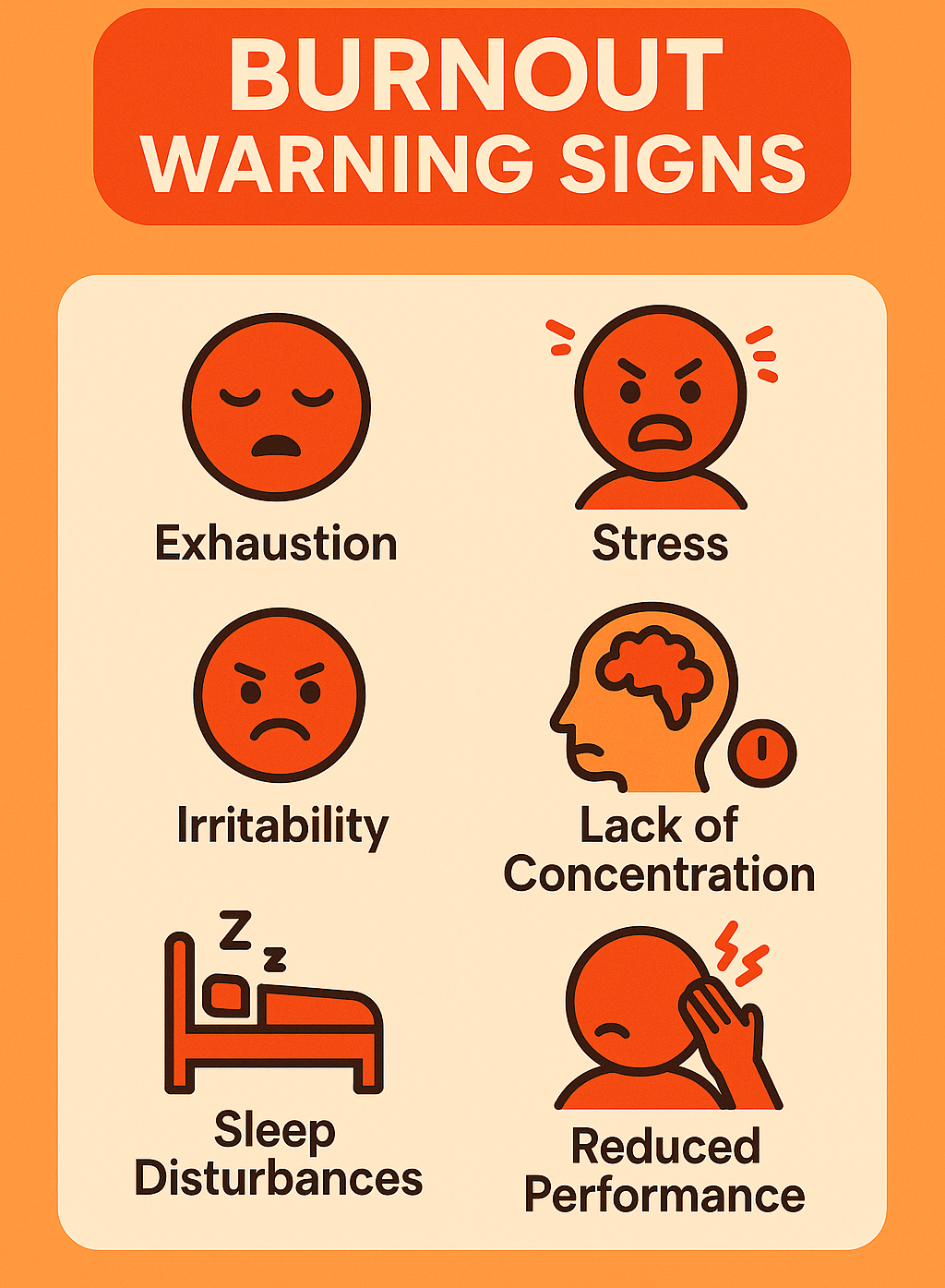Beat Work Stress and Burnout: Your Complete Guide to Recovery and Prevention
Beat Work Stress and Burnout: Your Complete Guide to Recovery and Prevention
9/6/20259 min read


Beat Work Stress and Burnout: Your Complete Guide to Recovery and Prevention
In today's demanding work environment, 77% of workers experience work-related stress, with 66% reporting burnout at an all-time high in 2025. This comprehensive guide explores the causes, symptoms, and most importantly, effective solutions for managing work stress and preventing burnout before it derails your career and health.
Table of Contents
Understanding Work Stress vs. Burnout
What Is Work Stress?
Work stress is your body's immediate response to challenging demands or pressures in the workplace. It's a natural physiological and psychological reaction that can actually be beneficial in small doses, providing motivation and heightened focus. However, when stress becomes chronic or overwhelming, it transforms from a helpful response into a serious health concern.
Think of stress like a car engine revving up—it gives you the energy boost needed to tackle challenges. But if that engine runs at high RPMs constantly without proper maintenance, it will eventually break down.
What Is Burnout?
Burnout is a state of chronic physical, mental, and emotional exhaustion caused by prolonged exposure to work-related stress. According to the World Health Organization (WHO), burnout is characterized by three key dimensions:
Energy depletion or exhaustion - Feeling completely drained of physical and emotional resources
Increased mental distance from job - Developing cynicism and negative feelings toward work
Reduced professional efficacy - Doubting your abilities and questioning your effectiveness
Unlike temporary stress, burnout doesn't improve with a weekend off or a short vacation. It's a chronic condition that requires comprehensive intervention and often professional support.
Root Causes of Workplace Stress
Understanding the primary causes of work stress is crucial for both prevention and treatment. Research identifies several key stressors that consistently contribute to workplace stress across industries:
1. Overwhelming Workloads and Deadlines
Heavy workload remains the top cause of workplace stress, affecting productivity and well-being. When employees face:
Unrealistic deadlines that create constant pressure
Excessive tasks without adequate resources or support
Insufficient time to complete quality work
Multiple competing priorities without clear guidance
Impact: 41% of workers report that stress makes them less productive, creating a vicious cycle where mounting tasks lead to increased pressure.
2. Job Insecurity and Economic Uncertainty
In 2025, job insecurity has emerged as a significant stressor, with 54% of U.S. workers reporting that uncertainty about their job stability significantly impacts their stress levels.
Fear of layoffs or company restructuring
Concerns about career advancement opportunities
Economic instability affecting job market confidence
Uncertainty about future employment prospects
3. Poor Work-Life Balance
Long working hours and inflexible schedules contribute significantly to burnout:
Extended work hours beyond regular schedules
Difficulty disconnecting from work during personal time
Limited flexibility in scheduling or remote work options
Pressure to be constantly available via email or messaging
4. Ineffective Communication and Leadership
Poor communication creates stress through:
Unclear expectations and role ambiguity
Lack of feedback on performance
Insufficient information about company changes
Poor relationships with supervisors or colleagues
5. Lack of Control and Autonomy
Employees experience stress when they feel powerless over their work environment:
Limited decision-making authority in their role
Rigid processes with no room for creativity or input
Micromanagement that undermines confidence
Inability to influence factors affecting their job performance
Warning Signs: Recognizing Burnout Symptoms
Early recognition of burnout symptoms is essential for effective intervention. Burnout develops progressively through distinct stages:
Stage 1: The Honeymoon Phase
High enthusiasm and energy for new roles or projects
Willingness to work extra hours and take on additional responsibilities
Optimism about future growth and development
Strong desire to make positive impressions
Stage 2: Onset of Stress
Beginning to feel pressure from increasing demands
Occasional irritability or impatience with colleagues
Starting to skip breaks or work through lunch
Mild physical symptoms like tension headaches
Stage 3: Chronic Stress
Persistent fatigue that isn't relieved by regular sleep
Difficulty making decisions or solving routine problems
Withdrawal from social activities and workplace engagement
Increased susceptibility to illness due to weakened immune function
Stage 4: Burnout
Emotional exhaustion and detachment from work
Sense of failure and self-doubt despite previous accomplishments
Increased absenteeism or mental disengagement while physically present
Development of negative coping mechanisms
Stage 5: Habitual Burnout
Long-term condition significantly impacting mental health and job performance
Career regression due to decreased motivation
Development of serious clinical conditions requiring medical treatment
Significant impact on personal relationships and life satisfaction
Physical and Emotional Warning Signs
Common burnout symptoms to watch for:
Physical: Chronic exhaustion, frequent headaches, muscle tension, sleep disturbances, frequent illness
Emotional: Cynicism, irritability, anxiety, feeling overwhelmed, loss of enjoyment in work
Behavioral: Increased absenteeism, isolation from colleagues, decreased productivity, procrastination
Mental: Difficulty concentrating, memory problems, self-doubt, negative thinking patterns
The Hidden Health Impact
The psychological and physical impact of chronic workplace stress extends far beyond temporary discomfort, creating serious long-term health consequences:
Economic Cost of Workplace Stress
$1 trillion - Annual global cost of depression and anxiety in lost productivity
$300 billion - Annual cost to U.S. industry from stress-related absenteeism, reduced productivity, and accidents
$190 billion - Annual healthcare costs in the U.S. attributed to work-related stress
1 million workers absent daily due to stress-related issues
Physical Health Consequences
Immediate Effects:
Elevated blood pressure and heart rate
Tension headaches and muscle pain
Digestive issues and stomach problems
Sleep disturbances and insomnia
Weakened immune system leading to frequent illness
Long-term Health Risks:
Cardiovascular disease and heart attacks
Diabetes and metabolic disorders
Chronic pain conditions
Autoimmune disorders
Increased risk of stroke
Mental Health Impact
Psychological Effects:
Anxiety disorders and panic attacks
Depression and mood disorders
Decreased cognitive function and memory problems
Reduced creativity and problem-solving abilities
Increased risk of substance abuse
Workplace Performance:
91% of overwhelmed employees report negative impact on work quality
33% experience reduced engagement and motivation
15% actively seek new employment due to stress
52% feel disconnected from work and colleagues
Stress vs. Burnout: Key Differences
Understanding the difference between stress and burnout is crucial for choosing appropriate interventions:
AspectStressBurnoutDurationShort-term, situationalChronic, long-term conditionEnergy LevelHigh anxiety, urgencyComplete exhaustion, emptinessEngagementStill engaged, trying hardDetached, cynical, withdrawnEmotionsOverwhelm, pressureHopelessness, numbnessPhysical SymptomsTension, headachesChronic fatigue, frequent illnessRecoveryImproves with restDoesn't improve with time offWork AttitudeDissatisfaction but still caringComplete disengagement, cynicismSolution ApproachStress management techniquesComprehensive lifestyle changes
Key Insight: The Progression
Stress is like a battery running low - you still have some power, but it's diminishing. Burnout is like a completely dead battery that won't charge even when plugged in. Stress can be motivating and temporary, while burnout represents a fundamental depletion that requires significant recovery time and often professional intervention.
Proven Solutions and Coping Strategies
Individual Stress Relief Strategies
1. Mindfulness and Meditation Techniques
2-Minute Mindfulness Practice:
Find a quiet space and sit comfortably
Set a timer for 2 minutes
Focus on your breath - inhale slowly, exhale completely
When your mind wanders, gently return attention to breathing
Practice 2-3 times daily for optimal stress relief
Benefits: Research shows mindfulness meditation reduces anxiety, improves focus, and lowers cortisol levels.
2. Physical Exercise and Movement
Effective workplace exercises:
Take a 10-minute walk during lunch breaks
Use stairs instead of elevators
Practice desk stretches every hour
Try yoga or tai chi for stress reduction
Why it works: Exercise releases endorphins, the body's natural stress relievers, and helps process stress hormones like cortisol.
3. Time Management and Boundary Setting
Practical strategies:
Prioritize tasks using the Eisenhower Matrix (urgent vs. important)
Break large projects into smaller, manageable tasks
Set realistic deadlines and communicate limitations
Learn to say "no" to non-essential requests
Establish clear work-life boundaries
4. Sleep and Recovery Optimization
Sleep hygiene for stress management:
Maintain consistent sleep schedule (7-9 hours nightly)
Create a relaxing bedtime routine
Avoid screens 1 hour before sleep
Keep bedroom cool, dark, and quiet
Limit caffeine after 2 PM
Advanced Coping Techniques
1. Cognitive Restructuring
Identify negative thought patterns contributing to stress
Challenge unrealistic expectations and perfectionism
Practice positive self-talk and affirmations
Develop realistic perspectives on work challenges
2. Progressive Muscle Relaxation
Systematically tense and release muscle groups
Start with toes, work up to head and face
Practice for 10-15 minutes daily
Particularly effective for physical tension from stress
3. Journaling and Emotional Expression
Write about stressful experiences and emotions
Identify patterns and triggers
Track progress and celebrate small wins
Use gratitude journaling to shift perspective
Workplace Stress Management Initiatives
Organizational Approaches to Reduce Stress
1. Environment and Culture Improvements
Create a supportive work environment:
Improve physical workspace with plants, natural light, and comfortable seating
Establish quiet zones for focused work and relaxation
Implement "No Meeting Mondays" or protected focus time
Encourage social interaction and team building activities
2. Flexible Work Arrangements
Work-life balance solutions:
Offer flexible start and end times
Provide remote work options when feasible
Allow compressed work weeks (4-day schedules)
Implement job sharing for demanding positions
3. Workload Management Programs
Sustainable work practices:
Regular workload assessments to ensure realistic expectations
Cross-training to prevent single points of failure
Adequate staffing levels to handle peak periods
Clear prioritization systems and resource allocation
4. Communication and Leadership Training
Improve management practices:
Train supervisors to recognize stress and burnout signs
Develop clear communication channels and feedback systems
Implement regular check-ins and performance conversations
Create open-door policies for addressing concerns
Employee Support Systems
1. Employee Assistance Programs (EAPs)
Confidential counseling services
Crisis intervention and support
Resources for personal and family issues
Referrals to mental health professionals
2. Wellness Programs
On-site fitness facilities or gym memberships
Stress management workshops and training
Healthy eating initiatives and nutrition education
Mental health awareness campaigns
3. Recognition and Reward Systems
Regular acknowledgment of achievements
Career development opportunities
Fair compensation and benefits packages
Opportunities for advancement and skill building
Self-Care and Personal Recovery Tips
Daily Self-Care Practices
1. Morning Routine for Resilience
Start with 5-10 minutes of meditation or deep breathing
Set three realistic priorities for the day
Practice gratitude by noting three things you appreciate
Fuel your body with nutritious breakfast
2. Workday Stress Breaks
Take a 5-minute break every hour
Practice the 20-20-20 rule: every 20 minutes, look at something 20 feet away for 20 seconds
Do brief stretching exercises at your desk
Step outside for fresh air when possible
3. End-of-Day Transition Rituals
Create a clear boundary between work and personal time
Write down tomorrow's priorities to clear your mind
Practice a relaxation technique (deep breathing, progressive muscle relaxation)
Engage in enjoyable activities unrelated to work
Weekend and Long-term Recovery
1. Digital Detox Strategies
Set specific times to check work emails (not constant monitoring)
Use "Do Not Disturb" features on devices during personal time
Create phone-free zones in your home (bedroom, dining area)
Take regular breaks from social media
2. Hobby and Interest Cultivation
Pursue activities that bring joy and fulfillment
Learn new skills unrelated to work
Spend time in nature for natural stress relief
Maintain social connections outside of work
3. Professional Support When Needed
Consider therapy or counseling for persistent stress
Explore stress management coaching
Join support groups for workplace stress
Consult healthcare providers for stress-related physical symptoms
Real-World Success Stories
Case Study 1: Tech Company Transformation
Challenge: A software development company experienced 40% turnover due to burnout from excessive overtime and unrealistic deadlines.
Solution Implementation:
Implemented mandatory "Focus Fridays" with no meetings
Introduced flexible work hours and remote work options
Hired additional developers to distribute workload
Provided stress management training and mindfulness apps
Results: Within 6 months, turnover dropped to 15%, employee satisfaction increased by 35%, and productivity improved despite reduced overtime hours.
Case Study 2: Healthcare Worker Recovery
Challenge: A nurse experiencing severe burnout with symptoms including chronic exhaustion, cynicism toward patients, and frequent illness.
Individual Recovery Plan:
Reduced work hours temporarily and took a 2-week mental health leave
Started seeing a therapist specializing in healthcare worker stress
Implemented daily meditation and exercise routine
Joined a peer support group for healthcare professionals
Outcome: After 3 months, reported significant improvement in energy levels, job satisfaction, and patient care quality. Developed sustainable practices to prevent future burnout.
Case Study 3: Manufacturing Plant Initiative
Challenge: High stress levels due to safety concerns, demanding physical work, and poor communication between management and workers.
Organizational Changes:
Established labor-management stress prevention team
Improved safety protocols and equipment
Implemented regular "safety circles" for open communication
Provided stress management training and employee assistance programs
Impact: Reduced workplace accidents by 30%, decreased stress-related absences by 25%, and improved overall worker morale and productivity.
Building Long-Term Resilience
Developing Stress Resistance
1. Emotional Intelligence Skills
Self-awareness: Recognize your stress triggers and early warning signs
Self-regulation: Develop healthy coping mechanisms for difficult emotions
Empathy: Build stronger relationships that provide support during stressful times
Social skills: Communicate effectively about workload and boundaries
2. Cognitive Flexibility
Practice reframing challenges as opportunities for growth
Develop multiple perspectives on difficult situations
Build problem-solving skills and creative thinking
Cultivate acceptance of things beyond your control
3. Physical Resilience Building
Maintain regular exercise routine (150 minutes moderate activity weekly)
Prioritize nutrition with balanced, whole food diet
Ensure adequate sleep (7-9 hours nightly)
Practice stress-reduction techniques daily
Creating Sustainable Work Habits
1. Energy Management
Identify your peak energy times and schedule important tasks accordingly
Take breaks before you feel exhausted
Alternate high-focus work with lighter tasks
Build recovery time into your schedule
2. Continuous Learning and Adaptation
Stay updated with stress management research and techniques
Regularly assess and adjust your coping strategies
Seek feedback from trusted colleagues and supervisors
Participate in professional development focused on well-being
3. Building Support Networks
Maintain relationships with mentors and trusted colleagues
Participate in professional associations and networking groups
Develop friendships outside of work
Consider working with a coach or therapist for ongoing support
Summary: Your Action Plan for Stress-Free Work
Immediate Steps (This Week):
Assess your current stress level using the warning signs checklist
Implement one daily mindfulness practice (2-minute breathing exercise)
Set clear boundaries around work hours and email checking
Start a brief evening routine to transition from work to personal time
Short-term Goals (Next Month):
Establish regular exercise routine (even 20 minutes daily walking)
Improve sleep hygiene and aim for 7-9 hours nightly
Practice saying "no" to non-essential requests
Schedule regular breaks throughout your workday
Long-term Strategies (Next 3-6 Months):
Develop comprehensive stress management toolkit
Build stronger support networks both at work and personally
Advocate for workplace improvements if needed
Consider professional help if stress symptoms persist
Remember: Recovery from chronic stress and burnout takes time. Be patient with yourself and celebrate small improvements. The goal isn't to eliminate all stress—that's impossible and not even desirable. Instead, aim to build resilience and develop healthy responses to life's inevitable challenges.
Key Takeaway: Work stress and burnout are serious but treatable conditions. With the right combination of personal coping strategies, workplace support, and professional help when needed, you can not only recover from burnout but build lasting resilience for a healthier, more sustainable career.
Take Action Today
Ready to start your journey toward better stress management? Choose one strategy from this guide and implement it today. Your future self will thank you for taking the first step toward a healthier, more balanced work life.
Share your thoughts: What stress management technique has worked best for you? Leave a comment below and help others on their journey to better workplace wellness.
Subscribe for more: Get weekly tips on workplace mental health, productivity, and career wellness delivered straight to your inbox. Your well-being is worth investing in.










Subscribe us
contact@stylishemployee.com
+91-9548927641
© 2024. All rights reserved.
